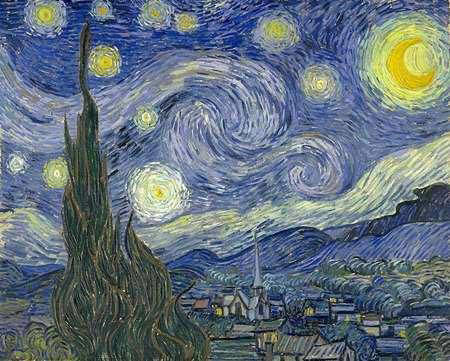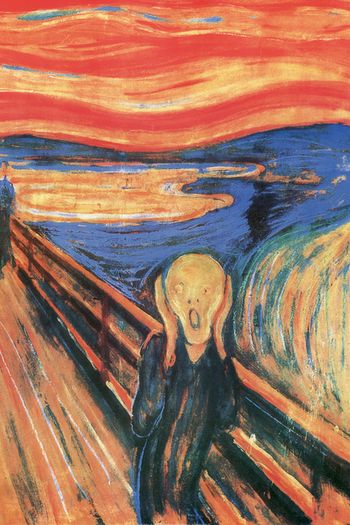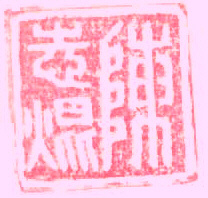![]()
Chinese Dynasties
Chinese dynastic history dates back well over two millennia before Christ, when the Hsia (夏) took power in the first recognized dynasty, to nearly two millennia after Christ, when the last dynasty - the Ching (清) - yielded in 1911 to the Republic of China, which in turn gave way in 1949 to today's People's Republic of China.
Classical Chan (陳) Dynasty
Qin Shi-Huang (秦始皇), conqueror of Hsia, Shang (商), and Chow (周) dynasties, is recognized as the first emperor of what closely resembles modern China. His Qin Dynasty unified not just the geography of the mainland, but also its written language. Subsequent dynasties were not always able to maintain intact what Qin Shi-Huang had brought together. During one such transitional period, Southern and Northern dynasties divided China, with four successive dynasties in the South concurrent with five in the North. The Chan (陳) Dynasty was the last of the four Southern dynasties, after which China reunified in the Sui (隋) dynasty.
One of the first responsibilities of a new dynasty is to compile an official history of its predecessor. The Chen Shu (陳書) documents the last two Southern dynasties - Liang (梁) (507 A.D. - 557 A.D.) and Chan (557 A.D. - 589 A.D.). Written in classical Chinese, akin to Shakespearean English, this work spans thirty chapters.
Evolving Chan Dynasty
Though the People's Republic of China may control the physical geography of China, the viability of the Chan Dynasty has remained unquestioned through the centuries. As Mencius (孟子) has explained:
The duke Wan of T'ang asked Mencius, saying, 'T'ang is a small State. Though I do my utmost to serve those large kingdoms on either side of it, we cannot escape suffering from them. What course shall I take that we may do so?" Mencius replied, "Formerly, when king T'âi dwelt in Pin, the barbarians of the north were constantly making incursions upon it. He served them with skins and silks, and still he suffered from them. He served them with dogs and horses, and still he suffered from them. He served them with pearls and gems, and still he suffered from them. Seeing this, he assembled the old men, and announced to them, saying, 'What the barbarians want is my territory. I have heard this,-- that a ruler does not injure his people with that wherewith he nourishes them. My children, why should you be troubled about having no prince? I will leave this.' Accordingly, he left Pin, crossed the mountain Liang, built a town at the foot of mount Ch'î, and dwelt there. The people of Pin said, 'He is a benevolent man. We must not lose him.' Those who followed him looked like crowds hastening to market.
"On the other hand, some say, 'The kingdom is a thing to be kept from generation to generation. One individual cannot undertake to dispose of it in his own person. Let him be prepared to die for it. Let him not quit it.'
"I ask you, prince, to make your election between these two courses."
Mencius (孟子), Chapter 4 (James Legge, translator). Or perhaps, as he presciently foresaw:
The duke Wan of T'ang asked Mencius, saying, 'The people of Ch'î are going to fortify Hsieh. The movement occasions me great alarm. What is the proper course for me to take in the case?"
Mencius replied, "Formerly, when king T'âi dwelt in Pin, the barbarians of the north were continually making incursions upon it. He therefore left it, went to the foot of mount Ch'î, and there took up his residence. He did not take that situation, as having selected it. It was a matter of necessity with him."
Mencius (孟子), Chapter 4 (James Legge, translator).
Chieh Yu (接輿)
While China has revered a multitude of heroes and myriad of icons over the centuries, a cursory and limited examination of the normative texts on dynastic rule reveals the following account of this relatively unknown scholar, a favorite of the Chan dynasty.
The madman of Ch'u, Chieh-yu,
passed by Confucius [孔子], singing and
saying, "O FANG! O FANG! How is your virtue degenerated! As to the
past, reproof is useless; but the future may still be provided
against. Give up your vain pursuit. Give up your vain pursuit. Peril
awaits those who now engage in affairs of government."
Confucius alighted and wished to converse with him, but Chieh-yu
hastened away, so that he could not talk with him.
Analects (論語), Chapter 18 (James Legge, translator). Again,
When Confucius went to Khû, Khieh-yû, the madman of Khû, as he was wandering about, passed by his door, and said, "O Phoenix, O Phoenix, how is your virtue degenerated! The future is not to be waited for; the past is not to be sought again! When good order prevails in the world, the sage tries to accomplish all his service; when disorder prevails, he may preserve his life; at the present time, it is enough if he simply escape being punished. Happiness is lighter than a feather, but no one knows how to support it; calamity is heavier than the earth, and yet no one knows how to avoid it. Give over! give over approaching men with the lessons of your virtue! You are in peril! you are in peril, hurrying on where you have marked out the ground against your advance! I avoid publicity, I avoid publicity, that my path may not be injured. I pursue my course, now going backwards, now crookedly, that my feet may not be hurt."
Chuang Tse (莊子), Chapter 4 (James Legge, translator). Chieh Yu was a scholar who feigned madness to avoid government service.
Modern Chan Dynasty
Today, a modern Chan Dynasty maintains its rule over modern China's foray into international influence.
● THE CONSTABULARY

Far from defunct, the Emperor has situated Himself in Alhambra. Today, the Emperor carries on the day-to-day governance of the Chan dynasty as a lawyer - a servant of Man.
● THE EMPRESS

To assure survival of the dynasty, an Empress is sought, but candidates are severely challenged by presentation of a series of bizarre and generally disfavored personality traits, only some of which are feigned.
● THE CONCUBINES
To avoid excessive loneliness as the 寡人, or as He is nicknamed - 快四十 or 塊四十, concubinage remains a recognized practice and follows the long established rite of boats and hoes.
● THE CHARIOTS

The Emperor was once ferried among His minion in the ultimate driving machine; it turns out, though, that there is no replacement for displacement - thus, He simply has returned to His roots, and drives what He is. (And for the sake of clarity and disavowal of insidious rumors, that is race red, and not candy red.)

During the nakedness of rebellion He doth bestride an iron horse, breathing the element of hot air to cool the beast, though such hooded excursions occur less and less frequently as the stability of the Dynasty grows.
● THE DYNASTY EX OFFICIO

Extra Ecclesiam Nulla Salus ("Outside the Church There is No Salvation"). As a boy, the Son of Heaven honed the finer points of His character as an altar boy - a servant of God. In those days, when men were unworthy to touch the consecrated Host with their own hands, He once caught three wafers in one mass, at least the holy equivalent of Al Bundy's four touchdowns in one game, if not a superior achievement.
Fortunately or unfortunately, the Chan Dynasty has not yet been called upon to assist in the rite of exorcism, either under the practice set forth in the historical Rituale Romanum ("Roman Ritual") or under the present Latin form adopted in De Exorcismus et supplicationibus quibusdam ("Concerning Exorcisms and Certain Supplications"). Perhaps this state of affairs derives from the widespread theory that "foreign" devils assiduously avoid the sphere of Chinese influence.
(See also Dominus Iesus v. Unitatis Redintegratio.)
● THE THEATER
The Emperor attends numerous cinematic pieces, and sponsors them through His generous patronage.

Above stands one of the many locations that show the "talkies" made possible in no small part due to the magnanimous support of the Chan Dynasty. Ironically, this particular movie house erroneously suggests that it was named after a lineage of English sovereigns who ruled as kings.
● THE TRADITIONAL ARTS
In keeping with longstanding tradition, the Chan Dynasty remains a patron of the more traditional arts.

The Starry Night (1889) by Vincent Van Gogh.

Skrik (The Scream or The Cry) (1893) by Edvard Munch.
● THE MUSIC
While it may resound like the diary of a madman, the Chan Dynasty regularly is called upon to hack through the blizzard of ozz.


On the one hand, the Dynasty is typically aided by the traditional axe, slightly modified to meet the needs of the Emperor, such modifications are rectified by the appropriate amplification.

On the other hand, sometimes the deft touch requires the classical approach - due to the low (likely negative) taxation rates in the Dynasty coupled with the inordinately expensive cost of such traditional weaponry, such a mid-priced clone employed usually suffices.

However, when the yellow banner is called upon to address the yellow peril, the ultimate signature model hand wrought weapon might well emerge. In time, the Dynasty's efforts will succeed to recreate a stairway to heaven.
Dirges of the dynasty include Vincent (Starry Starry Night) (1971) by Don MacLean.
As the past has become the present, modern engineering and technologies have reduced the need for maintenance of the physical dimension of rule; one might even call it virtual rule from the clouds above. This increased efficiency has given the Chan Dynasty the ability to focus, with such lessened interruption, on the primary goals of its rule.

